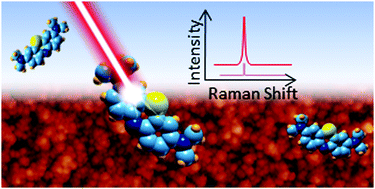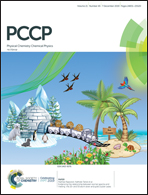Ag@TiO2 nanogranular films by gas phase synthesis as hybrid SERS platforms†
Abstract
The synthesis of hybrid metallic-dielectric substrates as reliable SERS platforms relies on core–shell nanoparticles, obtained by wet chemistry, with an outer dielectric shell composed of SiO2 or TiO2. Apart from the shell composition, the nanoparticle density and aggregation type strongly affect the surface-enhanced SERS. Going beyond a single layer by building random aggregates of hybrid NPs would result in a step forward in the production of reliable hybrid SERS platforms. Here we achieve the fabrication of a 3D nanogranular film of Ag metallic cores not fully enclosed in a TiO2 capping layer, defined as a Ag@TiO2 quasi-shell-isolated Raman substrate (Ag@TiO2 QuaSIRS) by an environmentally friendly gas phase synthesis technique (SCBD). The Ag core drives the electromagnetic enhancement with plasmonic hotspots while the TiO2 shell passivates it and leads to different possible surface functionalization. The SERS capabilities of the Ag@TiO2 QuaSIRS peak at a film thickness of 60 nm providing a detection limit of 10−9 M concentration for Methylene Blue at 632.81 nm. The importance of the nanogranular 3D morphology is evidenced by the very good detection of analytes dispersed in aqueous solutions, since the liquid can penetrate the pores hence exploiting most of the plasmonic hotspots present in the film. The versatility of SCBD to deposit such reliable hybrid SERS platforms by a single step at room temperature over different substrates provides an opportunity to design a new generation of hybrid SERS-active substrates based on hybrid nanoparticles.



 Please wait while we load your content...
Please wait while we load your content...